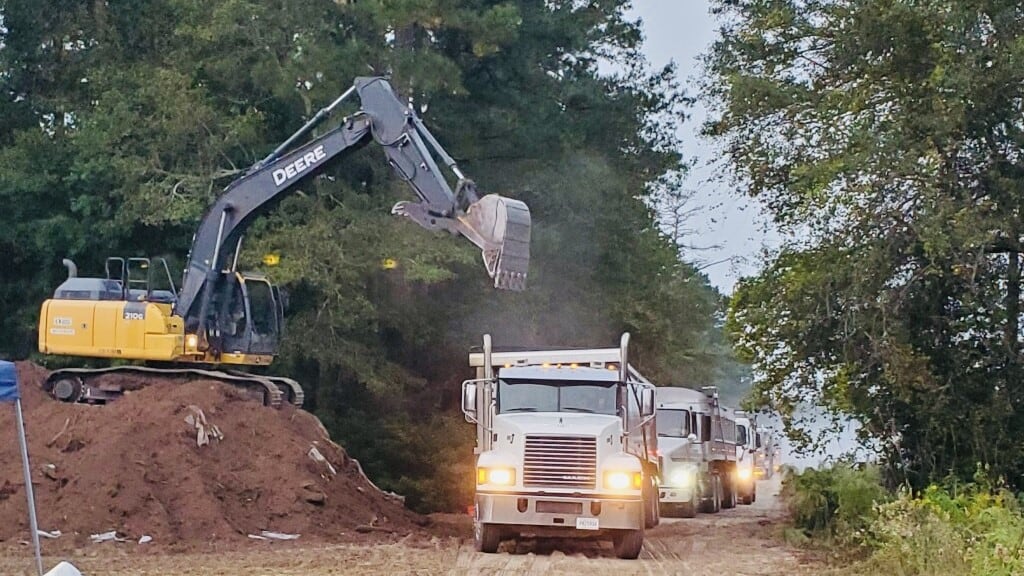The team of sailors, Marines and local and federal agencies has finished cleaning up the South Carolina site where an F-35B Lighting II jet crashed Sept. 17.
The downed jet went unaccounted for overnight after a pilot ejected and landed in a north Charleston backyard. The aircraft continued flying for about 60 more miles before crashing in a field in rural Williamsburg County, South Carolina, and was found the following day.
Beginning Sept. 19, hundreds of people participated in the effort to recover what was left of the aircraft and clean up the area, Navy spokesman Erik Anderson told Marine Corps Times in September. They hailed from the Navy, Marine Corps, South Carolina Department of Natural Resources, local law enforcement and fire-and-rescue services, and “other federal agencies and F-35 program stakeholders,” Anderson said.
Now, that effort is complete, according to the Navy.
RELATED

Sarah Murtagh, a Navy on-scene coordinator, said in a Navy Region Southeast news release Wednesday, “It is purposeful, sometimes tedious work.”
“I hope that the thorough job of removing contaminants we have done here underscores the Navy and Marine Corps’ commitment to ensuring the safety and environmental integrity of this beautiful area.”
The cleanup first involved moving the wreckage to Marine Corps Air Station Beaufort, South Carolina, Murtagh said in the release.
Then the team shifted its focus to clearing the area of contaminants. Soil samples confirmed that effort was successful, though it may take time for the natural vegetation to regrow, Murtagh said.
Those involved in the cleanup effort also removed affected crops and other plants in order to retrieve the wreckage and “limit further environmental impacts,” according to the release.
Representatives from the Navy will continue to meet with property owners, lessees and other people near the South Carolina mishap site about their needs and concerns related to the crash, according to the release.
The Navy didn’t provide specifics on how much the cleanup effort cost when asked by Marine Corps Times.
“Any aircraft salvage operation, environmental remediation and property restoration effort is costly,” Murtagh said Friday in an emailed statement to Marine Corps Times. “These costs are essential as the Navy On-Scene Coordinator’s goal is to ensure the wellbeing of the public and the resilience of the environment. There are a wide variety of internal and external expenses incurred in these situations.”
The Department of the Navy is investigating how the crash, which destroyed an approximately $100 million fighter jet, occurred.
Editor’s note: This story was updated Friday with an additional statement from the Navy.
Irene Loewenson is a staff reporter for Marine Corps Times. She joined Military Times as an editorial fellow in August 2022. She is a graduate of Williams College, where she was the editor-in-chief of the student newspaper.





